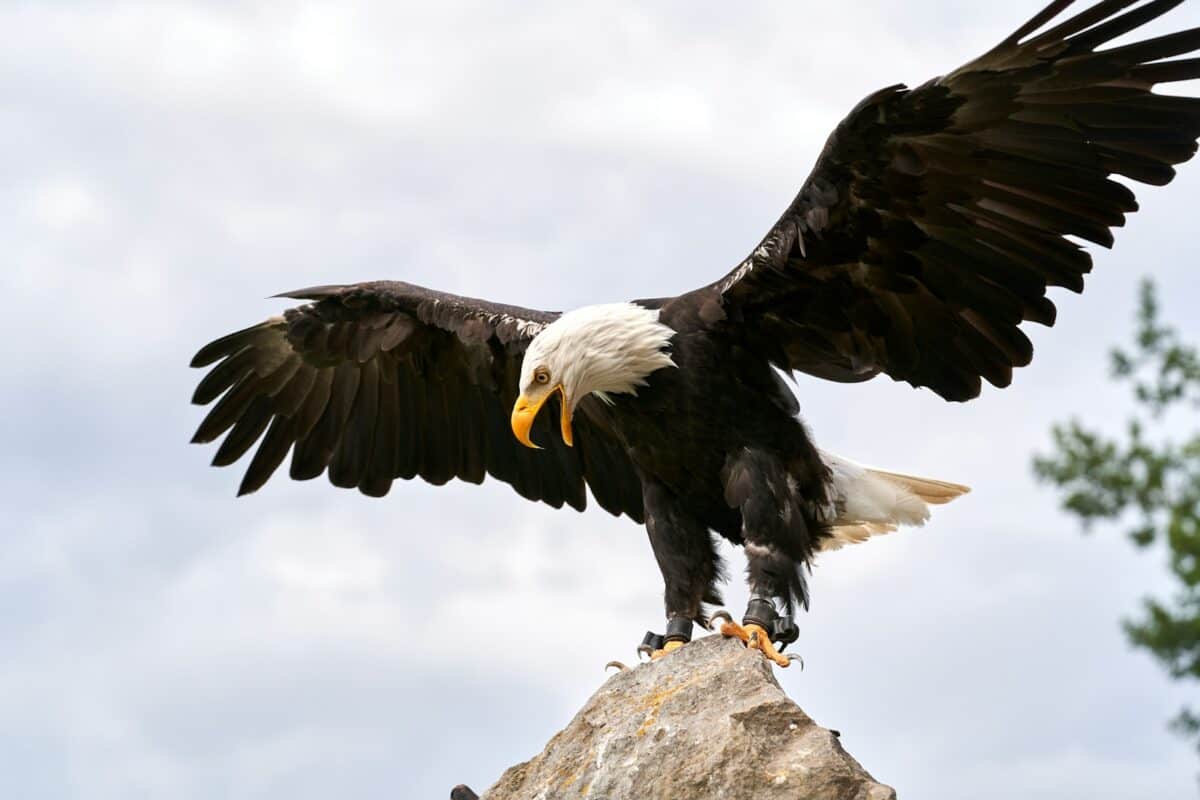Few symbols evoke American patriotism as powerfully as the image of a bald eagle soaring against a clear blue sky. With its piercing gaze and impressive wingspan, this majestic raptor has represented the United States for nearly 250 years. Yet beyond the iconic bald eagle, America celebrates several bird species that have come to symbolize different aspects of the nation’s character and history. From the wild turkey that Benjamin Franklin championed to the northern cardinal brightening winter landscapes across many states, these avian ambassadors reflect the diversity, resilience, and spirit of America. This article explores the fascinating birds that have become symbols of American pride, their natural history, cultural significance, and the conservation efforts that ensure these feathered patriots continue to thrive for generations to come.
The Bald Eagle: America’s National Bird
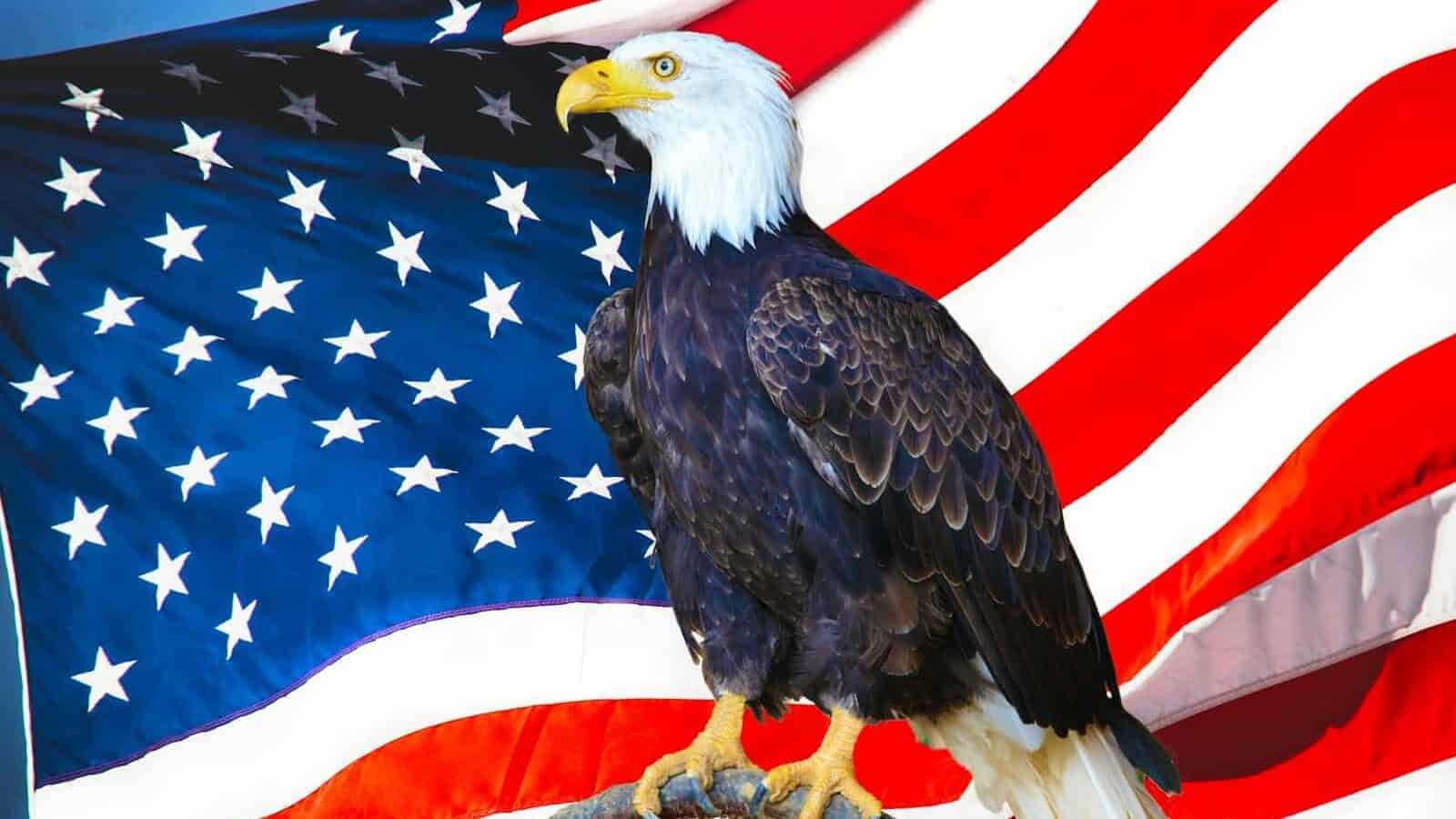
The bald eagle (Haliaeetus leucocephalus) has served as America’s national emblem since 1782 when it was placed on the Great Seal of the United States. Despite its name, the bird isn’t actually bald—its white-feathered head contrasts with its chocolate-brown body and wings, creating its distinctive appearance. With a wingspan reaching up to 7.5 feet and weighing between 8-14 pounds, these powerful birds of prey command attention wherever they fly. The founding fathers chose the bald eagle for its long life, strength, and majestic appearance, believing it embodied the wild, independent spirit of the new nation. The eagle’s image now appears on official documents, currency, and government buildings throughout the country, making it perhaps the most recognizable symbol of American identity worldwide.
The Bald Eagle’s Remarkable Recovery

The story of the bald eagle in America mirrors the nation’s own narrative of resilience and recovery. By the mid-20th century, bald eagle populations had plummeted due to habitat destruction, hunting, and the devastating effects of DDT pesticide, which caused their eggshells to thin and break before hatching. In 1963, only 417 nesting pairs remained in the contiguous United States. The species was among the first protected under the Endangered Species Act of 1973, launching one of America’s most successful wildlife conservation efforts. After decades of protection, habitat restoration, and DDT bans, bald eagles made a remarkable comeback. By 2007, with more than 9,700 breeding pairs counted, they were removed from the endangered species list. Today, with estimates exceeding 300,000 birds, the bald eagle’s recovery stands as a powerful testament to America’s commitment to environmental stewardship and conservation.
Wild Turkey: Benjamin Franklin’s Preferred National Bird
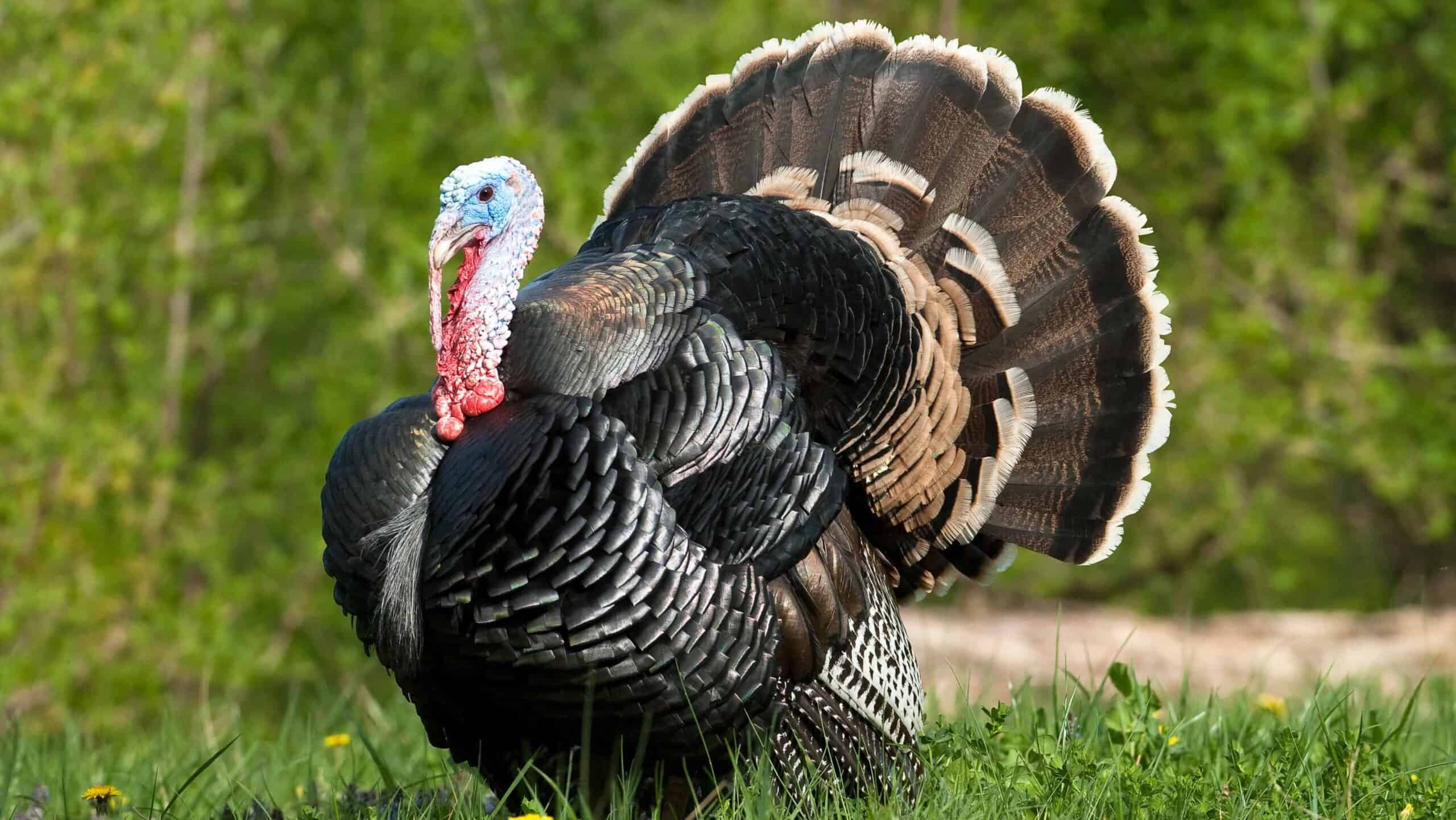
While the bald eagle claimed the spotlight as America’s national bird, Benjamin Franklin famously advocated for the wild turkey (Meleagris gallopavo) instead. In a letter to his daughter, Franklin criticized the eagle as “a bird of bad moral character” that “does not get his living honestly,” referring to its habit of stealing fish from other birds. In contrast, he praised the turkey as “a much more respectable bird” and “a true original native of America.” Though Franklin’s preference didn’t prevail, the wild turkey has maintained its significance in American culture, particularly as the centerpiece of Thanksgiving celebrations. These impressive birds can weigh up to 24 pounds, run at speeds of up to 25 mph, and fly in short bursts at 55 mph. After nearly being hunted to extinction in the early 20th century, conservation efforts have restored wild turkey populations to over 7 million birds across the country—another American conservation success story.
The American Robin: Harbinger of Spring
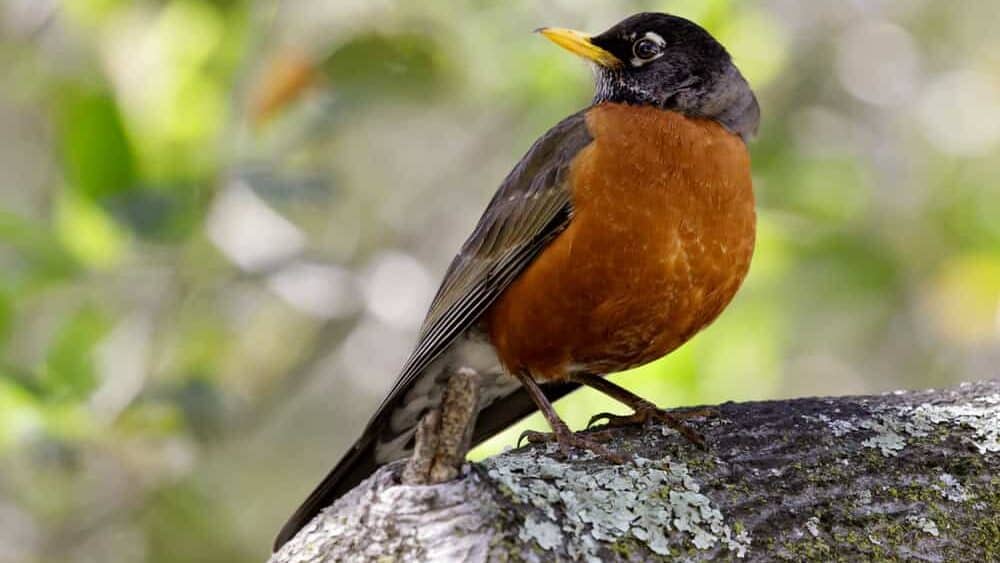
The American robin (Turdus migratorius) holds a special place in the hearts of many Americans as the beloved herald of spring. With its bright orange-red breast, gray-brown back, and cheerful song, this thrush species has become embedded in American folklore, literature, and even children’s rhymes. Named by early European settlers after the similar-looking European robin, these birds are actually much larger than their namesakes and belong to an entirely different family. American robins are found throughout North America, from Alaska to Mexico, adapting to diverse habitats including forests, mountains, and increasingly, suburban gardens. Their ubiquity has made them one of the most familiar wild birds to generations of Americans, and their dawn chorus has awakened countless citizens to the promise of new beginnings—a fitting metaphor for American optimism and renewal. In several states, including Connecticut, Michigan, and Wisconsin, the American robin has been honored as the official state bird.
The Northern Cardinal: A Patriotic Palette
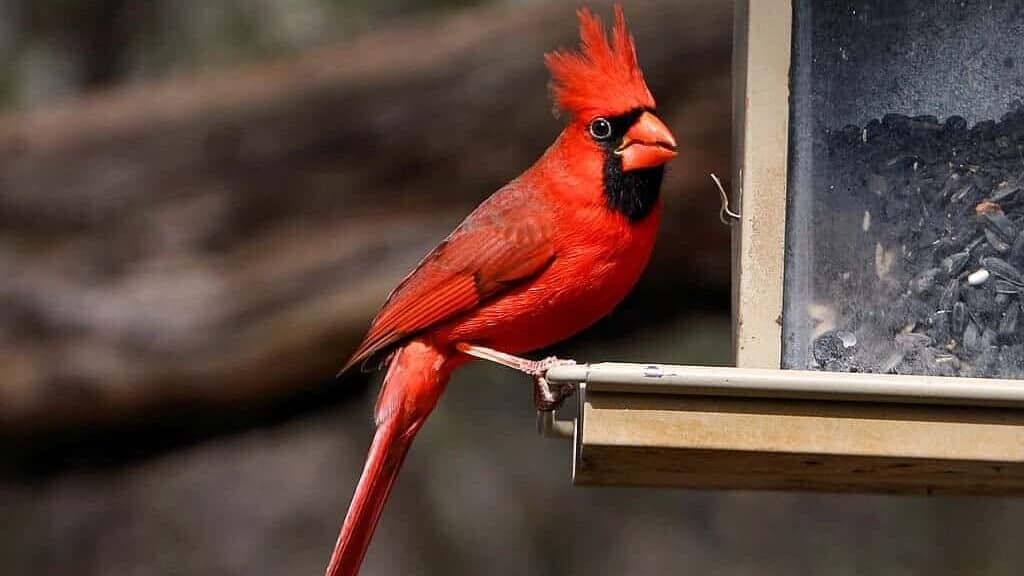
With its brilliant red plumage, black face mask, and distinctive crest, the northern cardinal (Cardinalis cardinalis) displays colors reminiscent of traditional American symbolism. The male’s vibrant red feathers, contrasted against winter snow or green summer foliage, create a striking vision that has captured the imagination of Americans for generations. Cardinals don’t migrate, remaining in their territories year-round and bringing color to winter landscapes when many other birds have departed. This loyalty to home territory resonates with American values of steadfastness and commitment. The northern cardinal has been selected as the state bird for seven states—Illinois, Indiana, Kentucky, North Carolina, Ohio, Virginia, and West Virginia—more than any other species. Their beautiful whistling songs and tendency to form long-term pair bonds have further endeared them to Americans, making them frequent subjects in art, literature, and even sports team mascots, including the NFL’s Arizona Cardinals and MLB’s St. Louis Cardinals.
The California Condor: Conservation Triumph

The California condor (Gymnogyps californianus) represents both America’s conservation challenges and its commitment to preserving natural heritage. With a wingspan of nearly 10 feet—the largest of any North American bird—these magnificent vultures once ranged across much of the continent. By 1982, hunting, lead poisoning, and habitat loss had reduced their population to just 22 individuals, bringing them to the brink of extinction. In a desperate last effort, all remaining wild condors were captured for a captive breeding program, making the species extinct in the wild for several years. This bold conservation initiative, involving collaboration between government agencies, zoos, and private organizations, gradually produced enough condors for reintroduction to begin in 1992. Today, over 300 California condors exist, with more than half flying free in California, Arizona, Utah, and Baja California, Mexico. Though still critically endangered, the California condor exemplifies American ingenuity, determination, and commitment to preserving natural treasures for future generations.
The Greater Sage-Grouse: Icon of the American West
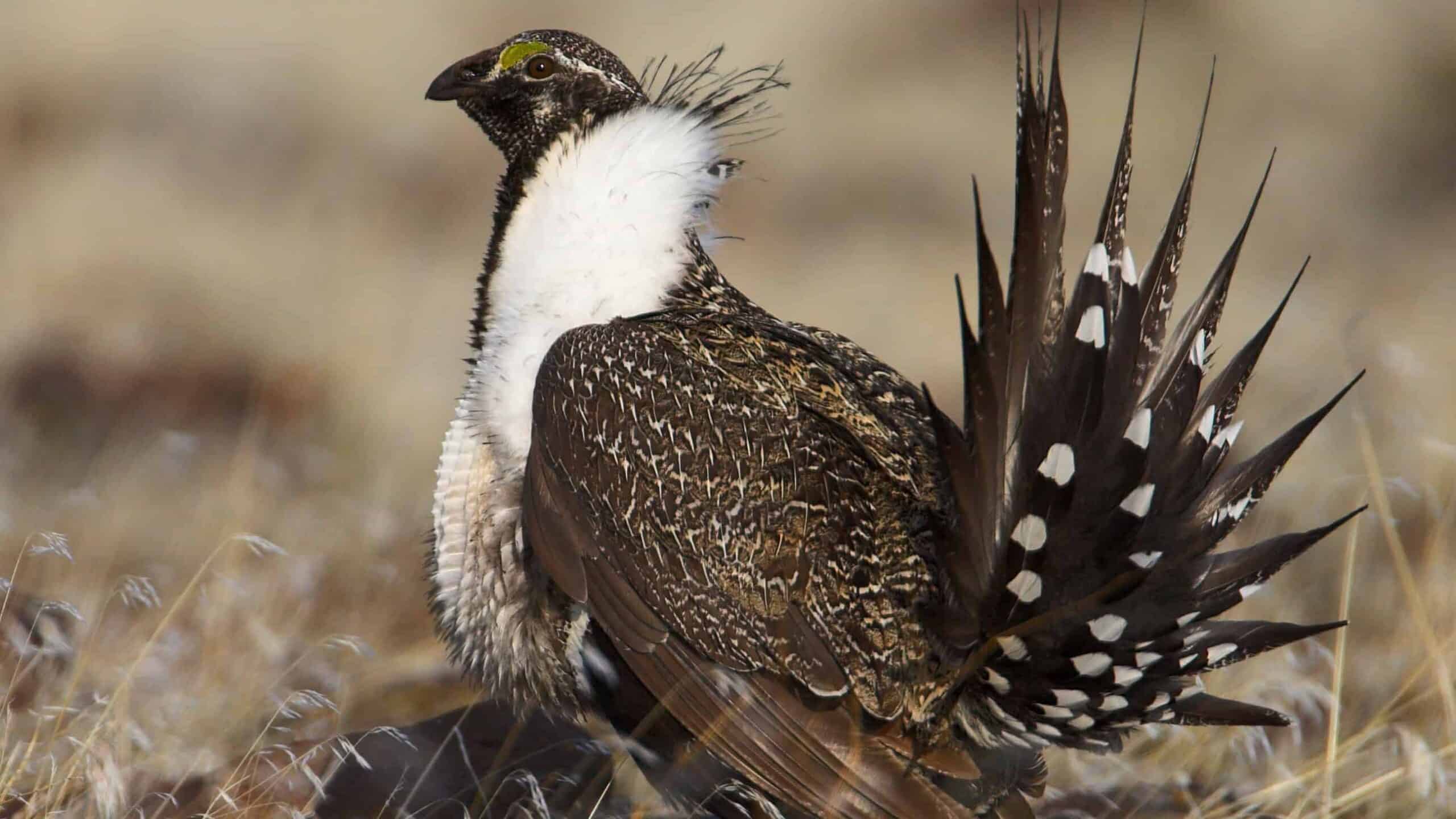
The greater sage-grouse (Centrocercus urophasianus) embodies the wild spirit of the American West with its spectacular mating displays and deep connection to the sagebrush ecosystem. Male sage-grouse perform elaborate courtship rituals on traditional breeding grounds called leks, puffing their white chest feathers, fanning their spiky tail feathers, and making distinctive popping sounds from specialized air sacs. These remarkable birds, once numbering in the millions across 13 western states, have declined dramatically as sagebrush habitats have been converted to agriculture, energy development, and urban expansion. Today, approximately 200,000-500,000 birds remain. Conservation efforts for the sage-grouse have become one of America’s largest landscape-scale wildlife protection initiatives, with cooperation between federal agencies, states, ranchers, energy companies, and conservation groups. This collaborative approach to protecting both the bird and the working landscapes of the West represents a uniquely American blend of conservation pragmatism and respect for both natural heritage and human livelihoods.
The Osprey: Symbol of Clean Waters
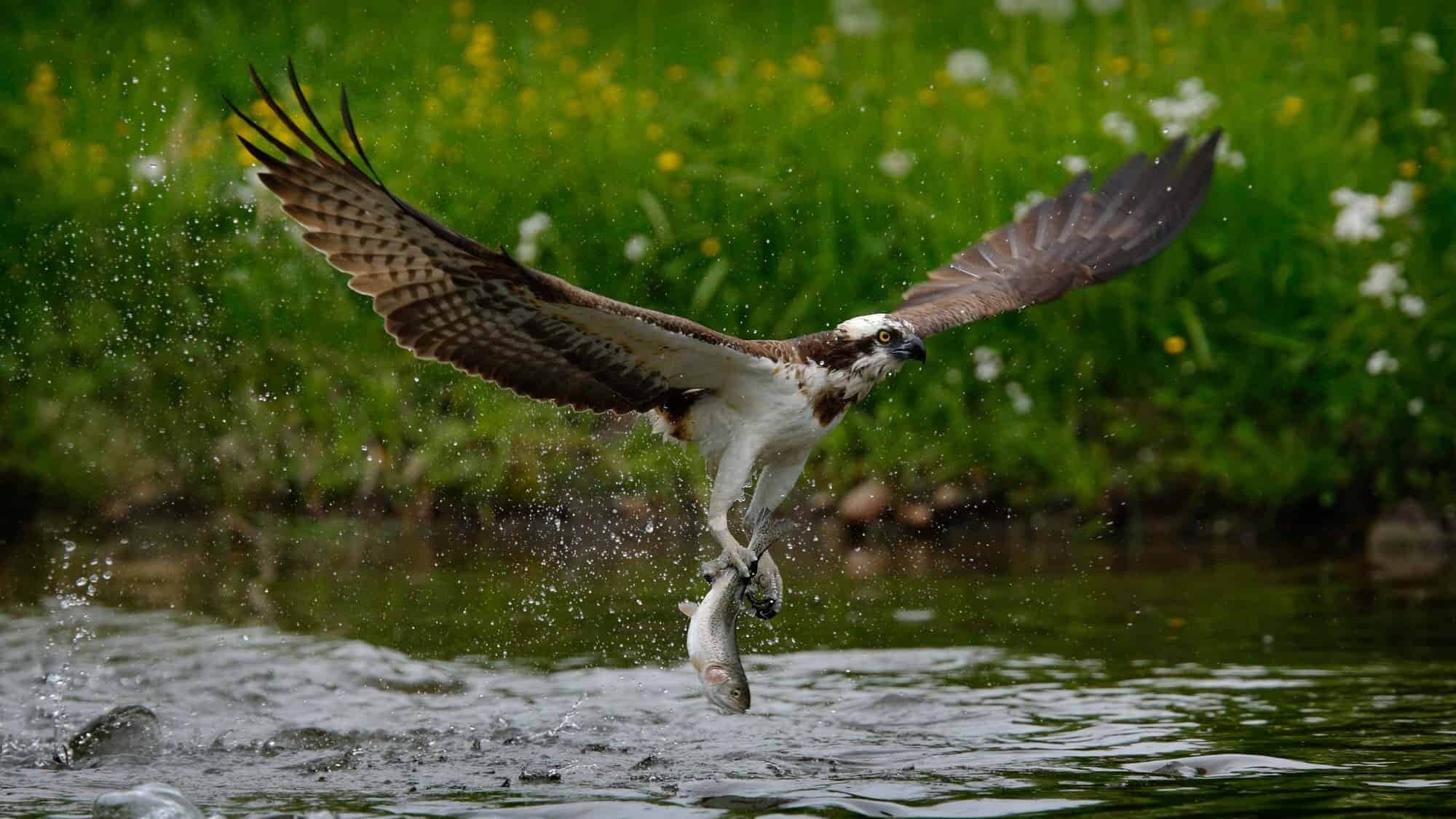
The osprey (Pandion haliaetus), sometimes called the fish hawk, represents America’s commitment to clean water and environmental restoration. These distinctive raptors, with their chocolate-brown upper parts, white underparts, and characteristic dark eye stripe, are specialized fish-eaters that dive feet-first into waters to catch their prey. Ospreys depend entirely on healthy fish populations and clean, productive aquatic ecosystems. Like bald eagles, ospreys suffered severe population declines due to DDT contamination in the mid-20th century. Following pesticide restrictions and concerted conservation efforts, including the installation of artificial nesting platforms along America’s waterways, osprey populations have rebounded dramatically. Today, an estimated 10,000 breeding pairs nest across North America, often in highly visible locations near human settlements. The osprey’s recovery parallels America’s growing environmental awareness and the success of the Clean Water Act in restoring many previously polluted waterways, making these magnificent birds living indicators of ecosystem health across the nation.
The Peregrine Falcon: Urban Adaptation
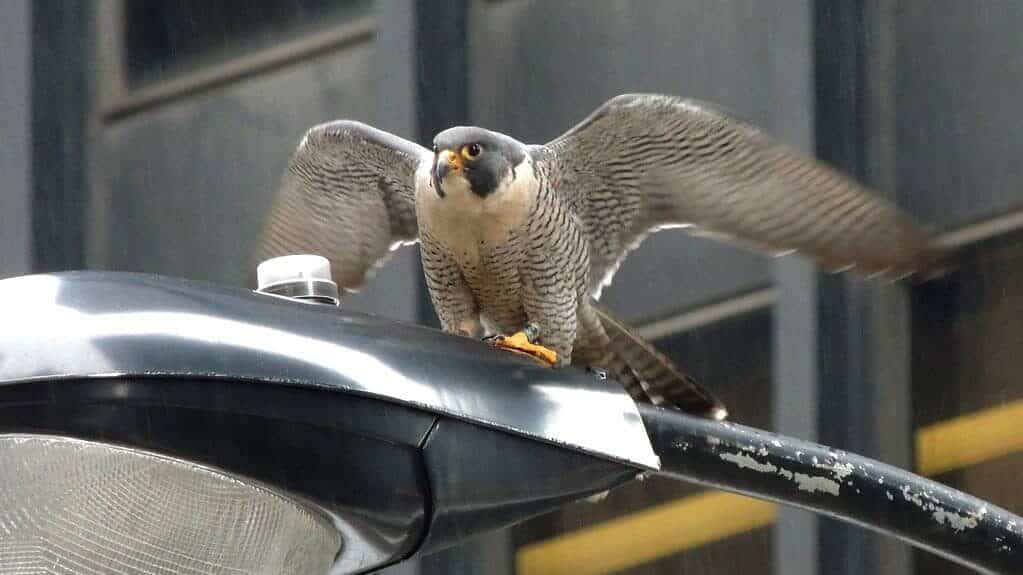
The peregrine falcon (Falco peregrinus) exemplifies American adaptability and technological innovation. Known as the fastest animal on Earth, capable of stooping (diving) at speeds exceeding 200 mph, these sleek raptors once nested primarily on remote cliffs. When DDT contamination caused their numbers to plummet—with just 324 known breeding pairs in North America by 1975—their recovery required human ingenuity. Scientists developed techniques for breeding peregrines in captivity and releasing them into the wild, often in urban environments where tall buildings mimicked their natural cliff habitats. This adaptation to city life has been remarkably successful, with peregrines now nesting on skyscrapers, bridges, and power plant smokestacks in major cities nationwide. Urban peregrines have become beloved local celebrities, with webcams broadcasting their family lives to thousands of fans. The falcon’s ability to thrive amid human development while controlling populations of pigeons and other urban birds makes them valuable allies in America’s cities. Removed from the endangered species list in 1999, the peregrine falcon’s recovery represents one of the greatest success stories in American conservation history.
The Great Blue Heron: Sentinel of American Wetlands
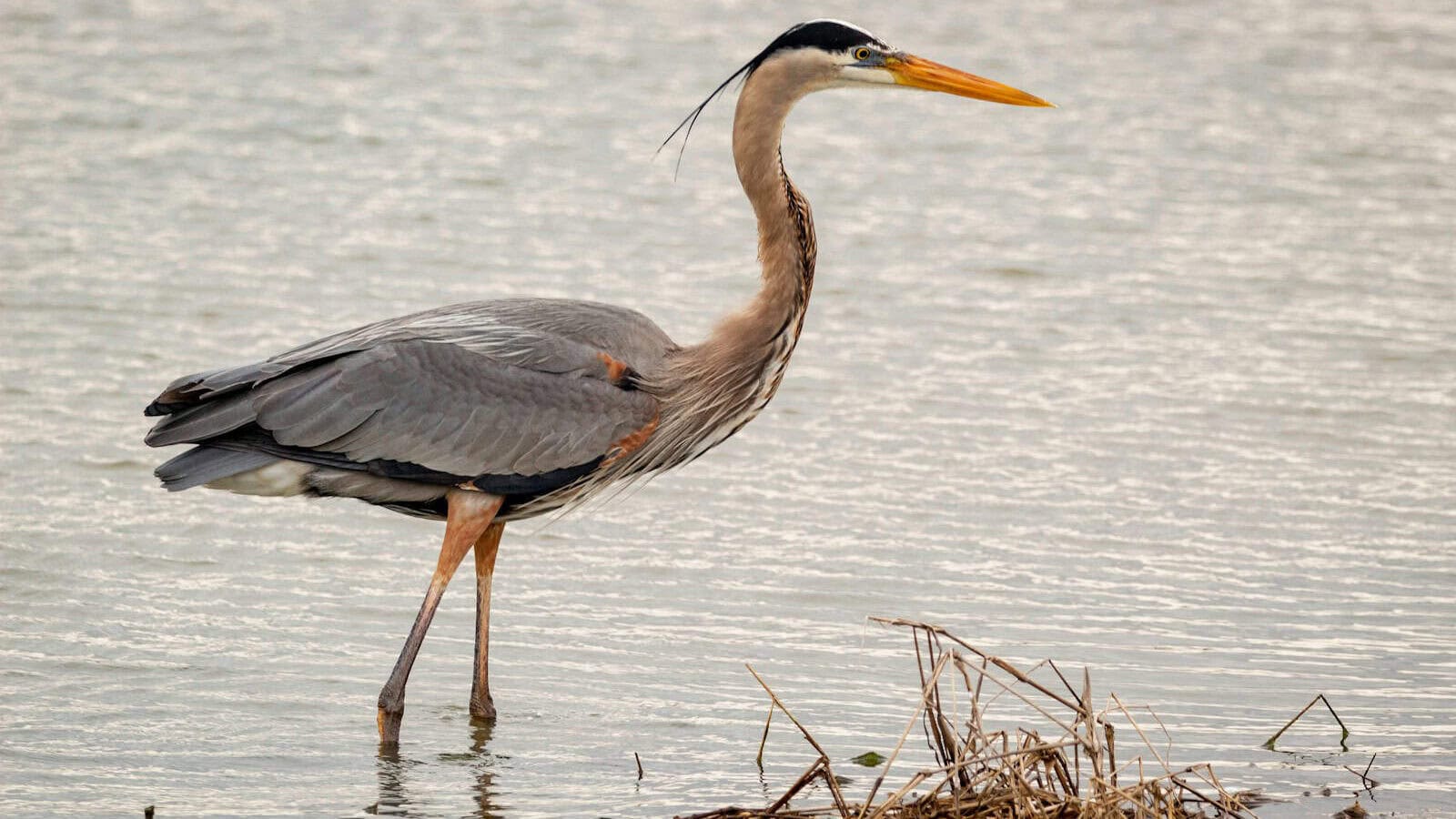
The great blue heron (Ardea herodias) stands as a dignified sentinel of America’s wetlands, rivers, and coastlines. Standing up to 4.5 feet tall with a wingspan of nearly 7 feet, these statuesque wading birds exhibit a patience and precision that resonates with traditional American values of steadfastness and self-reliance. Found in wetlands throughout most of North America, from southern Alaska to the Caribbean, great blue herons have witnessed the entire span of American history. Unlike many wetland species, great blue herons have shown remarkable resilience in the face of habitat changes, adapting to human-altered landscapes while maintaining their wild dignity. Their ability to utilize both natural and constructed wetlands, including storm water retention ponds and agricultural areas, has helped them maintain stable populations while many other wetland birds have declined. The sight of a great blue heron standing motionless at water’s edge or flying with slow, powerful wingbeats has inspired countless American artists, photographers, and nature enthusiasts, cementing their place in the nation’s natural heritage.
The Baltimore Oriole: America’s Pastime
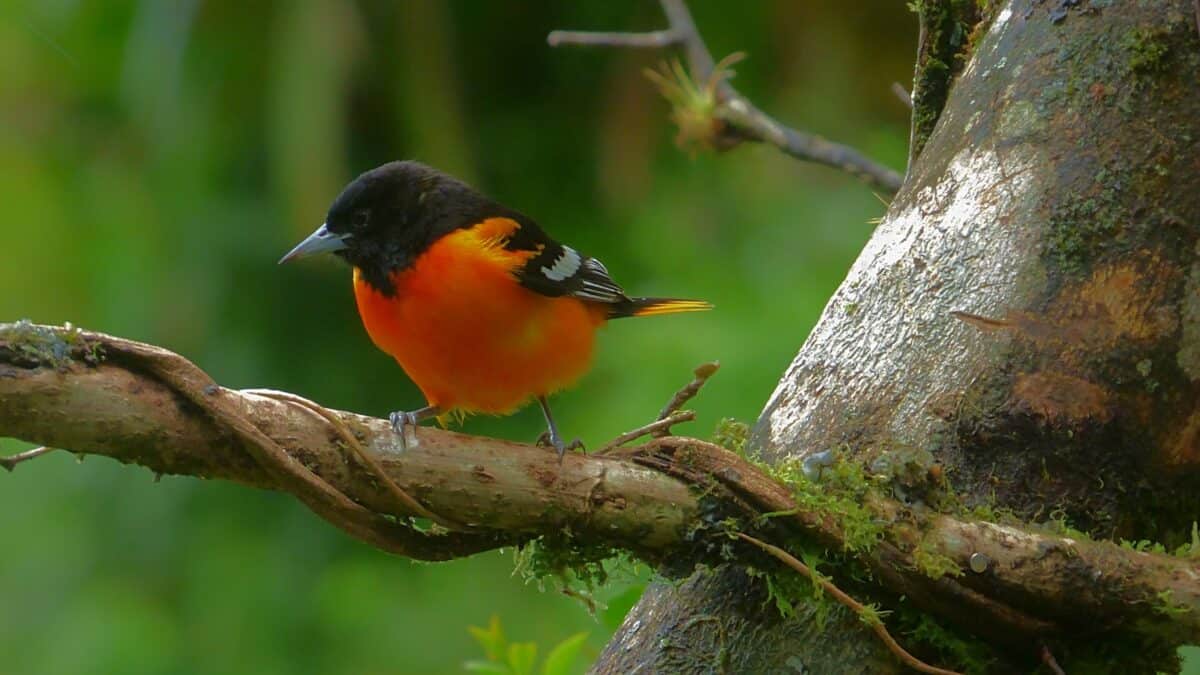
The Baltimore oriole (Icterus galbula) connects American natural heritage with its sporting tradition through its association with baseball. Named for its orange and black plumage that resembled the coat of arms of Lord Baltimore, this brilliant songbird inspired the name of Maryland’s Major League Baseball team. Males display striking orange underparts with black heads, backs, and wings, while females show more subdued yellowish coloration. These migratory birds winter in Central and South America before returning to the eastern United States and southern Canada to breed each spring, their arrival coinciding with baseball season. Baltimore orioles construct remarkable hanging nest pouches woven from plant fibers, demonstrating exceptional craftsmanship that mirrors American values of ingenuity and hard work. Though populations have declined by about 30% since the 1970s, Baltimore orioles remain relatively common in deciduous woodlands, parks, and suburban areas across eastern North America. Their sweet, flute-like song and fondness for backyard nectar feeders and orange halves make them beloved visitors to American gardens each summer.
The Whooping Crane: America’s Conservation Journey
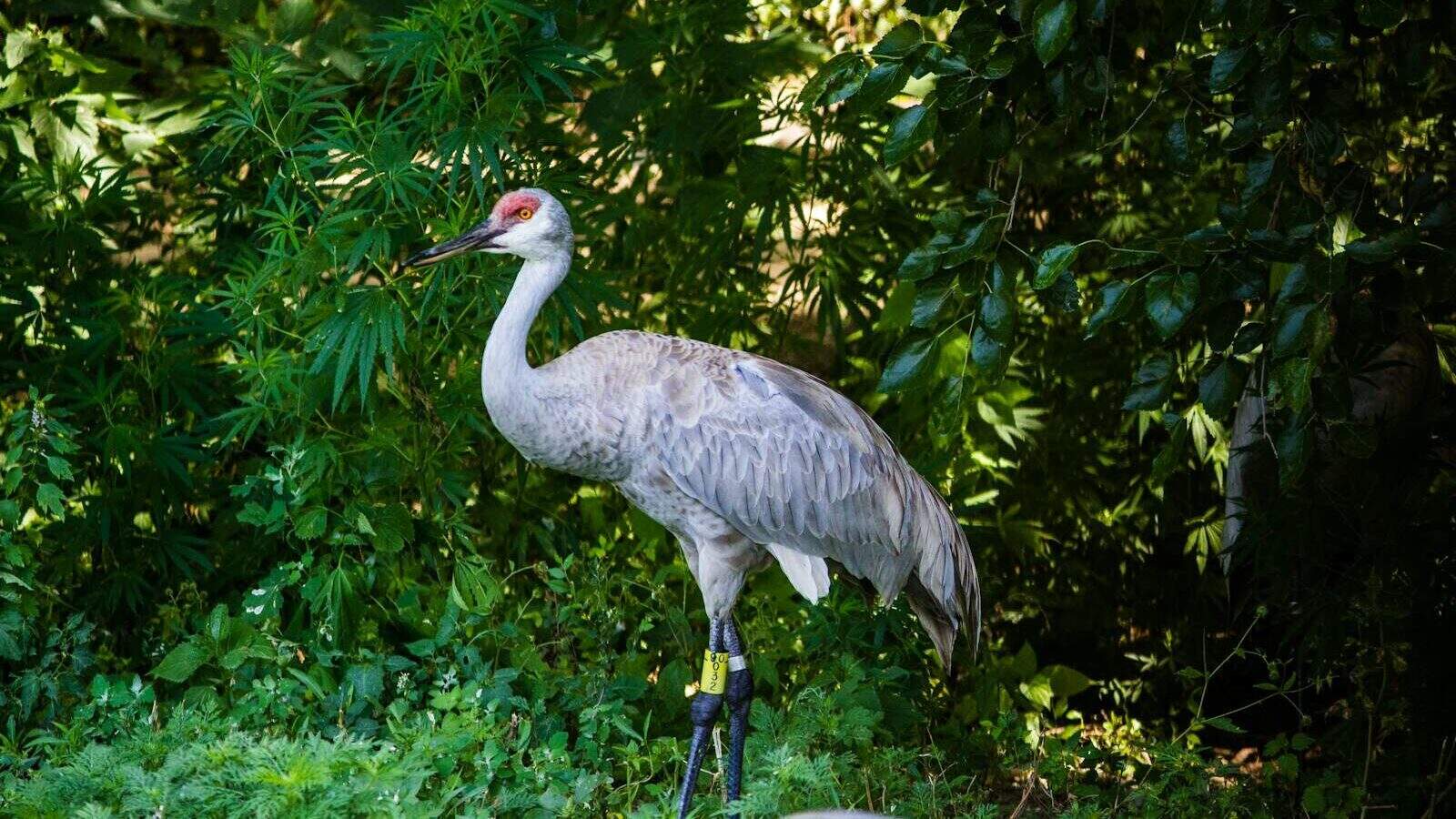
Standing five feet tall with striking white plumage, black wingtips, and a crimson crown, the whooping crane (Grus americana) represents America’s evolving relationship with wildlife conservation. Once ranging widely across North America, these magnificent birds declined catastrophically due to hunting and wetland drainage until, by 1941, only 15 birds remained in the wild. This precipitous decline galvanized early conservation efforts and helped inspire legislation like the Endangered Species Act. Recovery has been painstaking, involving innovative approaches including captive breeding, costume-reared chicks, and ultralight aircraft-led migrations. Today, approximately 500 whooping cranes exist in captivity and the wild, including the only natural migratory population that travels between Wood Buffalo National Park in Canada and Aransas National Wildlife Refuge in Texas. The whooping crane’s ongoing recovery journey—still fragile after decades of intensive work—reflects America’s growing understanding of the need for international cooperation and ecosystem-level conservation. Their haunting calls across restored wetlands serve as a powerful reminder of what can be lost and what determined conservation efforts can achieve.
As America faces the challenges of the 21st century, its symbolic birds continue to serve as both inspiration and barometers of environmental health. Climate change, habitat loss, and continued pollution threats pose new challenges for many of these iconic species, requiring adaptive conservation strategies and renewed commitment to environmental protection. Citizen science programs like the Christmas Bird Count and eBird have democratized bird monitoring, allowing ordinary Americans to contribute valuable data while deepening their connection to these symbolic species. Technological innovations, from satellite tracking to genetic analysis, provide new tools for understanding and protecting bird populations. Perhaps most importantly, America’s symbolic birds continue to capture the imagination of new generations, inspiring awe, wonder, and a sense of stewardship toward the natural world. As these feathered ambassadors adapt to changing landscapes and conditions, they remind us of our own capacity for resilience, innovation, and renewal—qualities that have defined the American experience throughout its history and will be essential for preserving the nation’s natural heritage for generations to come.
- The Coldest Town in America—And How People Survive There - August 9, 2025
- How Some Birds “Steal” Parenting Duties From Others - August 9, 2025
- 12 Deep-Sea Creatures You Won’t Believe Exist - August 9, 2025

